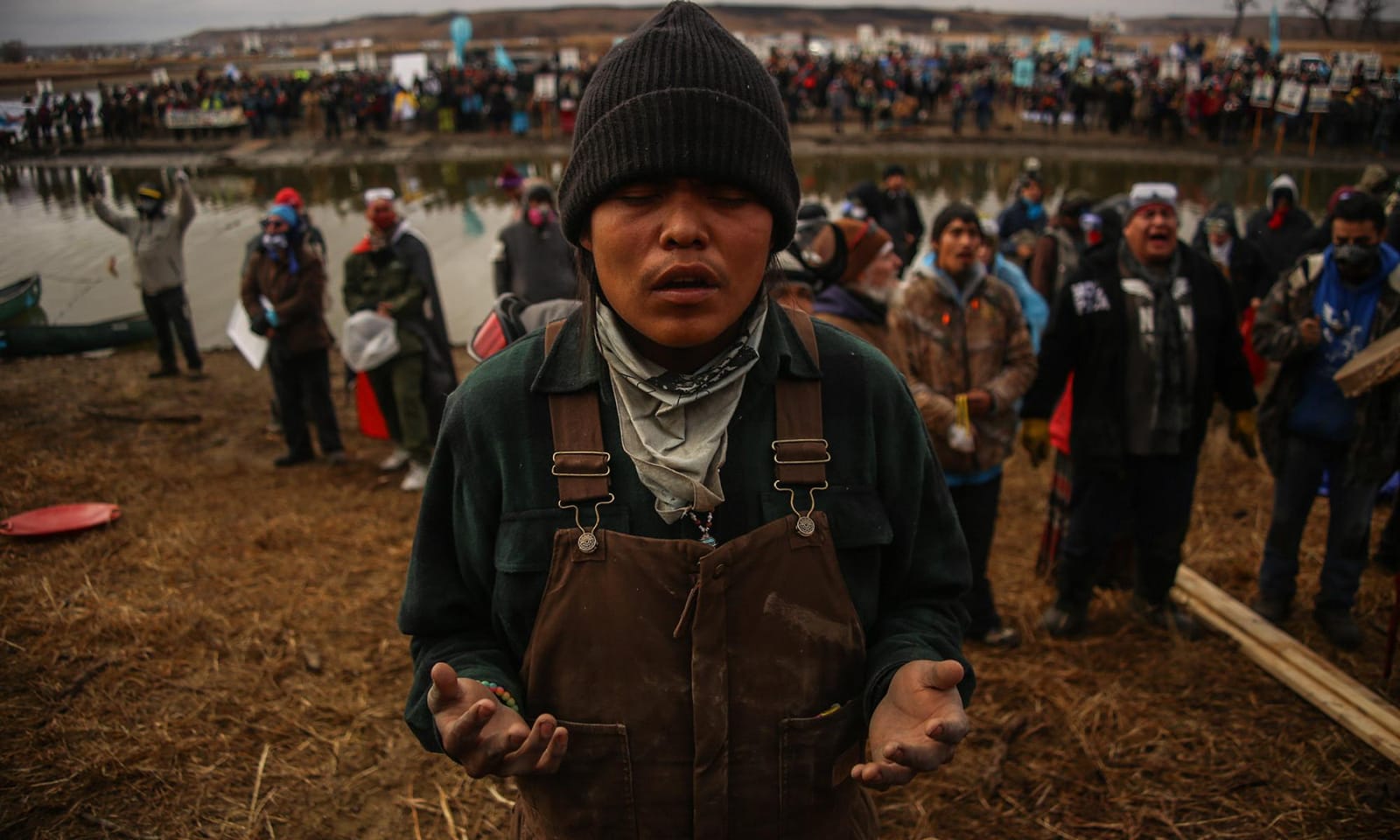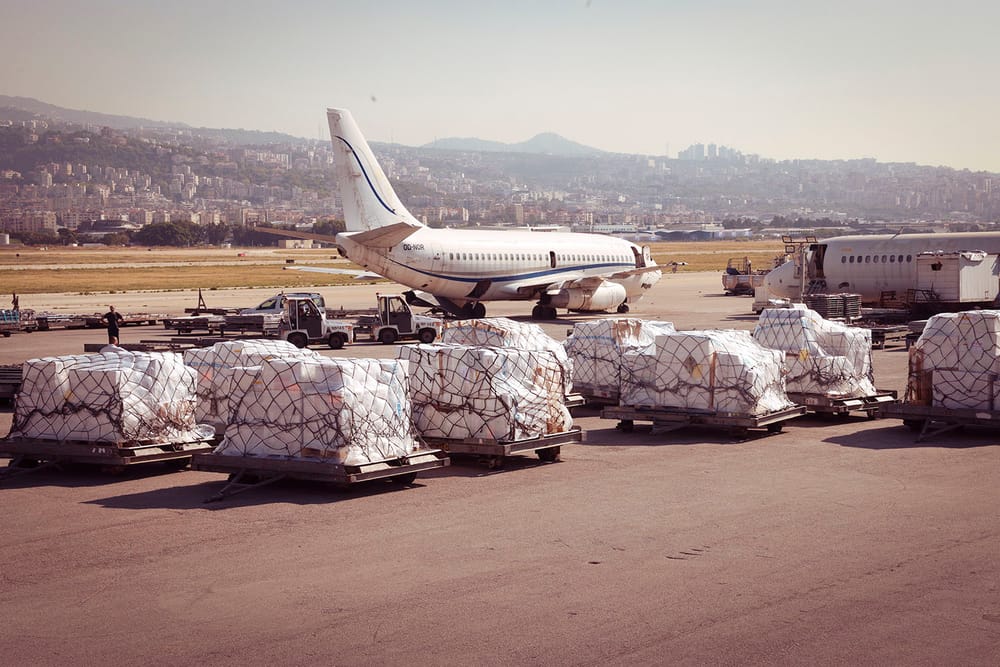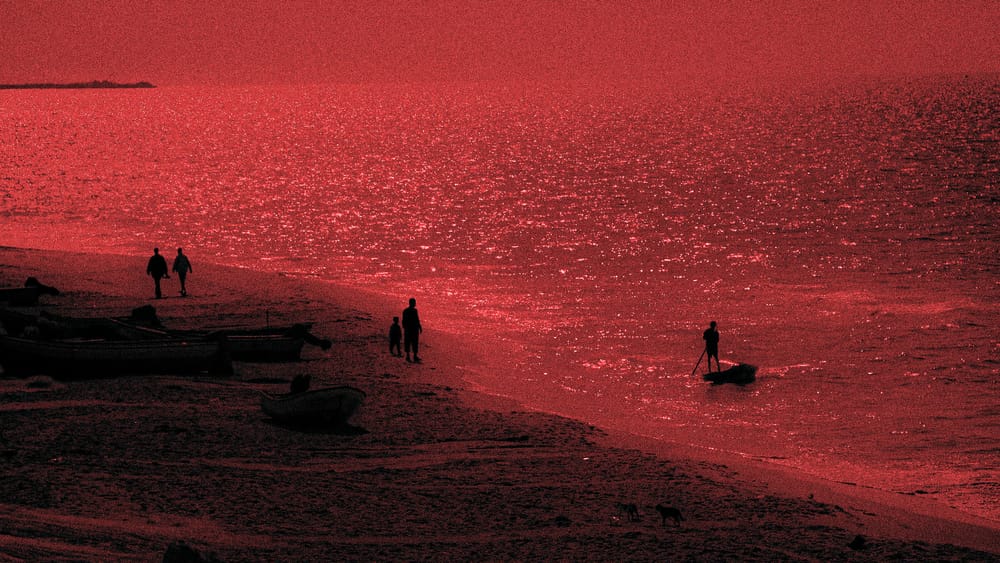Our planet is both magnificent and delicate, expansive and finite. Each biome contains resources that have sustained wildlife and humans for millions of years.
But the vast lands, rustling forests and clear waters that once existed in abundance are dwindling beneath our developing world, giving way to technologies and industries designed to exploit rather than nurture our environment. Global climate change, an increasingly threatening phenomenon, has prompted thawing glaciers, rising sea levels, intensifying natural disasters and other devastating patterns.
Whether we diverge from this path of destruction is our conscious choice as individuals and communities, corporations and governments. But where does that process begin?
The first and arguably most dedicated environmentalists were not the outspoken scientists and activists that we envision today, but rather the Indigenous communities that relied on the natural world to inform and sustain their lifestyles. Many of these peoples continue to revere nature and still view their territories as integral to their history, education and cultural preservation.
Their commitments to prioritising sustainability are not only admirable but essential, and may model the only way forward if we wish to protect our planet and ensure that future generations of all species are able to thrive. As Black Elk, a legendary warrior and spiritual healer belonging to the Oglala Sioux tribe located in South Dakota, United States, once declared, “As you walk upon the sacred earth, treat each step as a prayer.” Beyond religious practices, such a statement expresses a universal essence: our world is only as prosperous as we value and cultivate it to be.
As original caretakers of Unci Maka (“Mother Earth” in the Lakota language), Indigenous communities often confront harmful development projects and unsustainable systems that threaten the lands upon which their customs are founded. Their ceremonies and protests demonstrate courage, unity and deep respect for the spaces that exist beyond themselves.
Locating and learning from these groups can induce wider preservation movements supported by other populations, fostering togetherness behind a cause that solidarity can only bolster. As the practices of Indigenous peoples continually reveal, establishing mutualistic relationships with our earth ultimately requires humbling ourselves and recognising our roles within a greater ecosystem that rejects colonisation and embraces balance.
Resistance
Despite comprising five percent of our world’s population, Indigenous peoples protect 80 percent of global biodiversity. Throughout history, sometimes willingly and sometimes out of necessity, Indigenous leaders and communities around the world have raised their voices and heightened their efforts to preserve our planet when seemingly no one else would.
Tom Goldtooth, executive director of the US-based Indigenous Environmental Network (IEN) and 2015 recipient of the Gandhi Peace Award, has been publicly advocating for environmental justice since the late 1980s. A man of Navajo (Dine’) and Dakota ancestry, Goldtooth has devoted his life to uplifting the traditions and perspectives of Indigenous peoples and ensuring that their insights are adequately represented within decision-making spaces.
“In the late 1980s and early 1990s . . . studies [were] conducted that discovered [that] the environmental and public health laws of [the United States] discriminated against Indigenous peoples and People of Colour,” Goldtooth says. “It was found that many corporations and factories were building polluting industries and dumping large-scale toxic waste in the backyards of People-of-Colour communities with no regard [for] these peoples’ health.”
This environmental racism, often masked by misleading negotiations and empty promises, has become devastatingly common. In 2016, hundreds of Indigenous tribes gathered to protest the construction of the Dakota Access Pipeline, a structure intended to transport oil across the midwestern United States at the immense risk of harming lands, wildlife and resources relied upon by Native communities. The Keystone XL Pipeline, proposed in 2008 and designed to carry tar sands from western Canada through the midwestern United States, presented similar threats to water sources and other natural elements recognised as life-sustaining by Indigenous peoples.
On January 14, 2021, members of the international, Indigenous-led organisation Women’s Earth and Climate Action Network (WECAN) wrote a letter to the United States’ then President-elect, Joe Biden, demanding that, upon taking office, he denounce both the Dakota Access and Keystone XL pipelines (and a third project known as the Line 3 pipeline) to restore peace and justice to Indigenous territories. Once inaugurated, Biden responded to these activists and others by signing an executive order cancelling the permit for the Keystone XL pipeline, demonstrating important but long-overdue governmental support for Indigenous communities and environmental health.
To procure and maintain this political inclusivity, the Indigenous Environmental Network coordinates a variety of campaigns designed to raise awareness of environmentally-damaging endeavours and manipulative treaties, and empower Indigenous people to resist them.
“Because many tribal communities are economically depressed and tribal governments are under pressure to provide solutions . . . energy industries are able to leverage promises of short-term economic benefits to gain access to tribal lands and resources,” Goldtooth says. “Our rights to self-determination [and] . . . to protect our lands, territories and resources are increasingly and alarmingly [coming] under attack.”
In the late 1990s, IEN called particular attention to Persistent Organic Pollutants (POP), which are pesticides and other chemicals that, as industrialisation escalated, became popular despite their detrimental effects on human and environmental wellness. IEN’s campaign efforts, which included co-founding the International POPs Elimination Network, involved uplifting data that revealed Indigenous peoples to be “at higher risk” of POP contamination because of their “cultural and spiritual [practices] related to traditional food systems, diets and subsistence ways of life.”
Among other Indigenous groups pushing for environmental safety and sustainability are the Wet’suwet’en people, whose territory is located in British Columbia, Canada. In 2020, tribal members and other supporters rallied to oppose the construction of the Coastal GasLink pipeline through Wet’suwet’en lands.
David DeWit, Natural Resources Manager for the Office of the Wet’suwet’en, leads a team devoted to facilitating “meaningful engagement” and “informed decision-making” regarding environmental projects and interactions.
“We’re at a critical point right now [where we have] to ensure that not only Wet’suwet’en people but the world around us—the provincial governments, the federal governments, the municipalities, all of our communities—know what the state of our lands and environment are,” DeWit says. The Natural Resources Department as a whole gathers and shares information about our changing world, and rather than avoiding development, explores how to introduce new systems in responsible ways that honour Indigenous knowledges and benefit all involved entities.
“Land is . . . foundational for Wet’suwet’en cultural identity, language and transmission of cultural knowledge,” DeWit says. “[Our] hereditary chiefs have a responsibility to make [choices that] support the health and wealth of all living beings, including our non-Native brothers and sisters around us, not only for today but for tomorrow.”
Relationship
Indigenous cultures, though distinct, overwhelmingly embrace the same essential virtues when considering the environment: humility and reciprocity. But because colonisation values the opposite principles of power and individual ownership, Indigenous lifestyles have been disregarded and suppressed for centuries despite their immense sustainability.
“The most destructive [notion] that . . . European invaders imposed [was] the objectification and quantification of the natural world . . . They brought with them a philosophy of dominion over Mother Earth, of having property rights over nature,” says Goldtooth.
When asked to specify how Indigenous knowledges diverge from these self-serving ideologies, Goldtooth explains that there exists a well-known saying in the Dakota language that expresses, “There is no separation between us as humans and Mother Earth.” Another Dakota phrase communicates a similar sentiment: Ina maka wiconi maku, which means “my Mother Earth gave me life.”
Official Navajo (Dine') teachings even include what is known as Dine’ Natural Law, which outlines various standards that Dine’ people are required to uphold to ensure that nature remains not only respected but revered over generations.
One such standard reads, “The Dine’ have a sacred obligation and duty to respect, preserve, and protect all that was provided, for we were designated as the steward of these relatives through our use of the sacred gifts of language and thinking.” This tenet and others hold Dine’ people accountable for their treatment of our environment and their willingness to resist against any potential breaching of Earth’s sanctity.
David DeWit, on behalf of the Wet’suwet’en people, also offers insights regarding how Indigenous communities perceive and interact with their surroundings.
“We have a word called ‘Yintah’ that we use to refer to our [environment],” DeWit says. “[The term expresses how] every natural element is living . . . the trees, the soil, the water, the insects, even the rocks . . . and [how] they’re [all] related [to] and dependent on each other.”
From the gardens that sustain families to the open-air classrooms that inspire students, the Yintah is central to nearly every aspect of Wet’suwet’en life. Divided into 5 hereditary clans, 13 houses, and 38 house territories, Wet’suwet’en people share the responsibilities of caring for the spaces around them by finding the balance between how nature can serve them and how they can humbly and honourably serve nature.
“As humans, we are part of the Yintah as well, and our actions affect the . . . health and well-being of [other] natural elements. All living beings are equal, and we have a responsibility to speak for those [entities] that can’t speak for themselves, but that doesn’t make us as [people] any more significant than those . . . life-sustaining forces,” DeWit says.
Pursuing this equality requires honouring DeWit’s concise but crucial statement: “we can’t be taking resources without giving back.”
Tia Oros Peters, a Shiwi woman and chief executive officer of the internationally-reaching Seventh Generation Fund for Indigenous Peoples, is another advocate who speaks openly about the consciousness and generosity that characterises Indigenous perceptions of our environment.
Her perspective has shaped many of the Seventh Generation Fund’s initiatives, including the organisation’s Land Defenders and Water Protectors program, which equips grassroots Indigenous communities with the funding, support and other resources that they need to protect earth against harmful development. The group backs collectives such as the Tiny House Warriors, which consists primarily of Indigenous women based in British Columbia, Canada, who are building small shelters along the route of the Trans Mountain Pipeline to protest its construction across Secwepemc lands.
In a 2020 interview with Two Feathers: Native American Family Services, Oros Peters summarised the essence of what the Seventh Generation Fund and many Indigenous peoples ultimately believe and act upon: “[Sacred natural sites] have a right to be protected and nourished and loved, and engaged with by Indigenous peoples [who] know [these] areas and can gather from [them] the power, the energy, the knowledge, the songs that can serve the Indigenous world as well as the world at large.”
Resilience
If history has taught us anything, it’s that acknowledgment is important but on its own is insufficient; recognition must be accompanied by intentional and persistent action. Although only a select group of Indigenous communities have made front-page news for their environmental efforts, many more are working quietly behind the scenes every day to maintain the natural resources that surround and sustain them.
The selflessness central to these Indigenous cultures rejects overconsumption and greed and discourages material wealth from overcoming spiritual wealth. Because past colonisation has constructed dangerous systems, and enduring colonial tendencies threaten to damage our planet further, we must collectively strive to build a future rooted in reconciliation and respect, reciprocity and reverence.
As David Dewit beautifully articulates, “The health of the land is a reflection of the health of the people. If you continually take, you become poor, and there’s a sense of wealth in having strong communities. Hopefully, this way of knowing and being can [help us] carry waggus (“respect” in the Wet’suwet’en language, Witsuwit’en) for ourselves, for the world around us and for future generations.”







